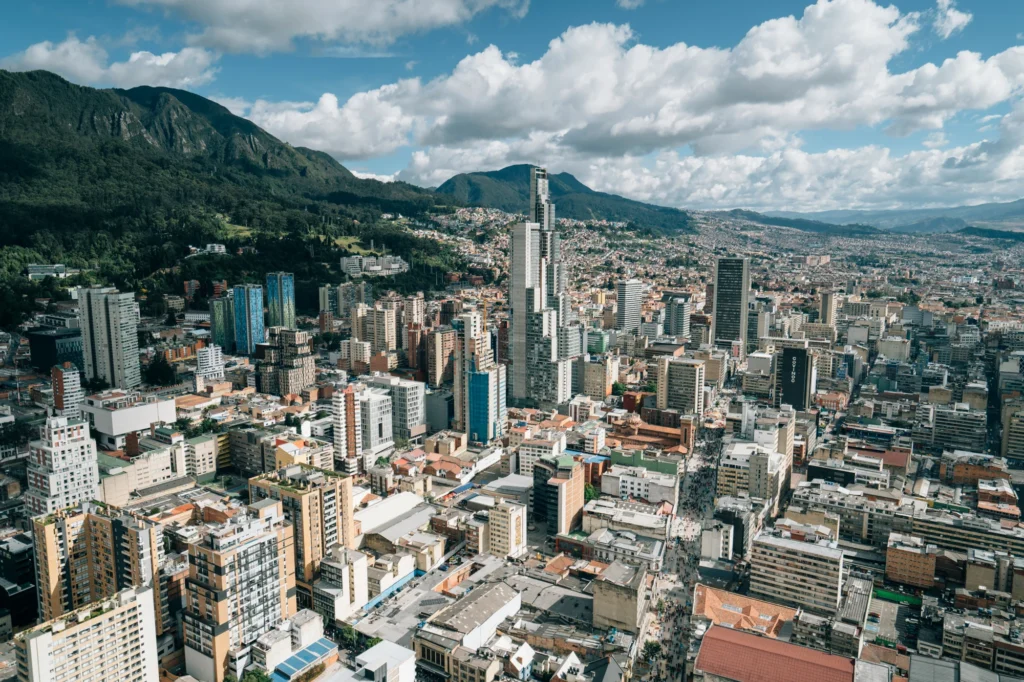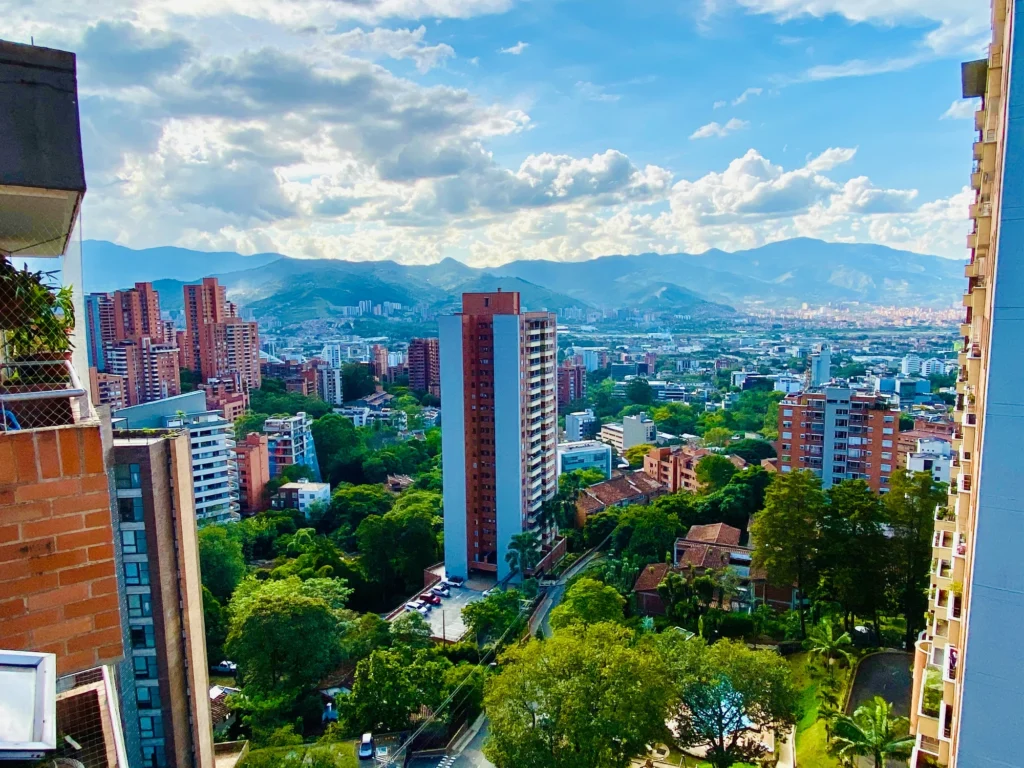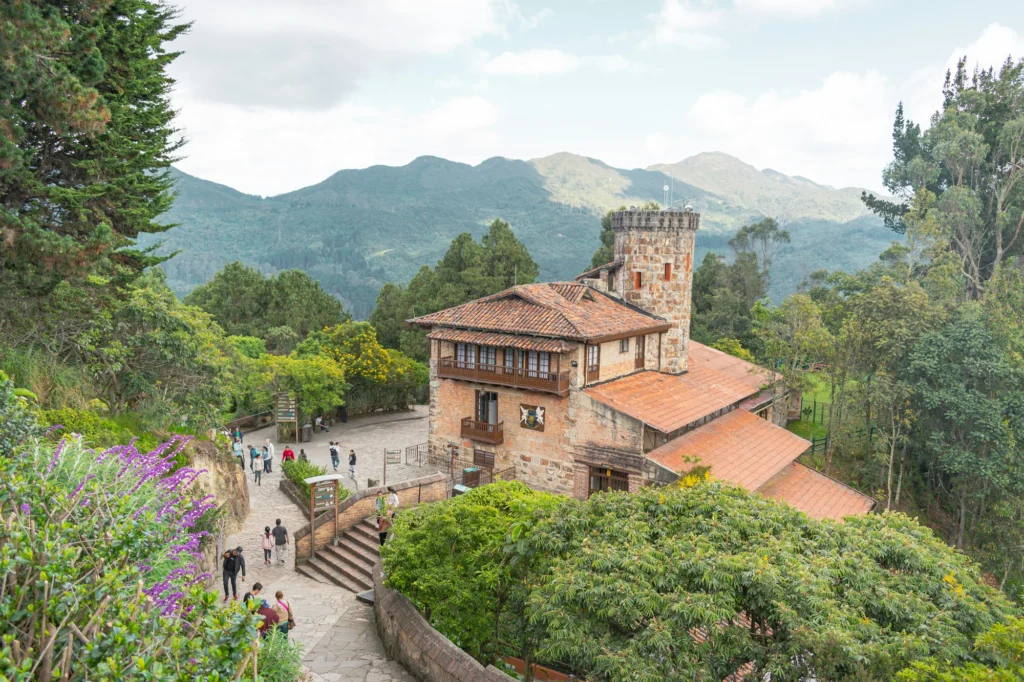“How do I move to Colombia?”
The common question we get from people like you (future clients) who fall in love with the biodiversity, the kind and welcoming people, the Andes mountains, the sandy beaches, and of course, the emerging economy – all that Colombia has to offer.
For Americans looking for an incredibly affordable cost of living, great year-round weather, quality healthcare, and a new adventure, Colombia checks all the boxes. But how do you move to Colombia – that is the question.
- How do you stay in Colombia legally?
- Can you buy a condo and stay forever?
- Do you need to speak Spanish?
- What if you’re only semi-retired?
- Which visa gives you the easiest path to permanent residency and citizenship?
Let’s break it down, step by step, so you can stop guessing and start planning for your move to South America’s northernmost country Colombia.
Or watch the video here instead:
A Colombian Tourist Visa Isn’t a Long-Term Solution
A lot of Americans start their Colombian journey with a tourist visa. It’s the path of least resistance. Just show up in Bogotá, Medellín, or Cartagena with a valid U.S. passport, and you’ll be granted 90 days of visa-free travel right at the airport.
If you leave the country and return, customs agents will give you 90 more days. But if you want to remain in the country throughout, you can extend this 90-day tourist visa once for another 90 days through an online application or – god forbid – an in-person visit to Migración Colombia.
So, in total, a Colombian tourist visa gives U.S. passport holders 180 days maximum per calendar year. If you overstay your tourist visa, you’ll have to pay a fine upon leaving the country and risk a re-entry ban. The Freedom Files immigration experts do not recommend this approach.
This 180-day annual limit does not roll over and resets every January 1. For example, if you spend July to December in Bogotá, you can simply stay and leave the country the following June. While your tourist visa never reached its limit of 180 days per year, you will become a tax resident in Colombia, which requires a separate article.
With this “perpetual tourist” approach, you also won’t build residency or eligibility for long-term benefits in Colombia. You cannot access the public healthcare system. You cannot obtain a local identity card. You cannot acquire citizenship in a matter of years.
Bottom line? The tourist visa is fine for testing Colombian waters (literally) – not for building a life there.
Of course, if you’re retiring and want to move to Colombia – not just visit – you need a longer-term, more permanent solution. That’s where these next immigration pathways come into play.
Let’s talk about the most common legal immigration paths for U.S. retirees in Colombia both under the “Migrant Visa” route – the Retirement Visa and the Investor Visa.
The Colombian Retirement Visa
The Retirement (Pensionado) Visa is designed for individuals with a guaranteed pension, like Social Security, a military or state pension, or a private annuity. To qualify, you need to show income of at least 3x the Colombian monthly minimum wage, which as of 2025, comes out to around US$1,000 per month.
Yes, that’s it.
Your pension must be for life – rental income or investment dividends don’t count toward the required income. But Social Security benefits qualify, and so do some other fixed retirement incomes. This visa can be issued for a maximum of three years and is renewable.
After five years of residency in Colombia (you don’t have to live here permanently to qualify), you can apply for permanent residency. This is when your countdown to Colombian citizenship can begin, which requires five more years of residency. You must pass a Colombian civics exam in Spanish to naturalize as a Colombian citizen.
This Retirement Visa permits you to live in Colombia year-round or as little as one day a year if you’d like. To remain eligible for visa renewal and permanent residency, you must meet those physical presence requirements and maintain a private healthcare plan.
A recent change to Colombian immigration law prohibited those on the Retirement Visa from accessing the public healthcare system. Trust us – This is not an issue. Private healthcare in Colombia is:
- Wildly affordable — US$40-80 per month for a basic plan and US$150-300 for a premium plan
- Top quality — Far better healthcare access, facilities, instruments, and doctors than the public healthcare system
So what’s the Investor Visa?

The Colombian Investor Visa
Now, the Investor Visa is for those who’d either like to own a home in Colombia or invest in a rental property.
If you invest at least US$100,000 (350x the Colombian monthly minimum wage) into Colombian real estate and can prove your investment with a deed and Central Bank proof of foreign direct investment, you qualify for immediate residency.
What’s great about property in Colombia is that thanks to the strength of the US dollar and economy, US$100,000 can buy a beachfront property or nice 2-bedroom apartment in a Colombian city.
This is just a minimum investment. So, if an investor wants to invest US$200,000 or more, they are able to do so.
The process is slightly more technical, but we help clients do it all the time.
One word of advice – Do not do this alone. This process is highly technical. In fact, our founder James obtained residency in Colombia via this visa. But unfortunately, we’ve met countless individuals who’ve worked with misinformed lawyers and invested in Colombian property – just to learn the Central Bank never verified the funds transfer and they lost the opportunity to obtain residency.
You’ll need to wire funds from the United States, record the transaction with the Banco de la República (Colombia’s Central Bank), and buy the property in-full once the funds are in Colombia. Only when you have the property deed and verification of ownership can you apply for the visa.
Once approved, your visa is valid for up to three years and can be renewed. After five years (just as in the case of the Retirement Visa), you may be eligible for permanent residency in Colombia.
Many retirees use this option when they want to buy their dream home in Colombia outright and skip the renting process. It’s also ideal if you don’t qualify for a retirement visa based on income.
But also, the Freedom Files recommends the Investor Visa in cases where the individuals have visited Colombia and experienced life here. We don’t recommend investing blindly into any countries.
Niche Options: Colombian Citizenship by Descent or Spouse Visa
Some retirees qualify for residency or citizenship through family ties. If you have Colombian parents or grandparents or in some cases even great-grandparents, you might be eligible for Citizenship by Descent. The process to obtain citizenship via your ancestry requires documentation and some paperwork, yes – but it avoids the visa process entirely.
If you or your family is Colombian, we highly recommend this route. A second or third citizenship is rarely a negative addition to your portfolio.
If you’re married to a Colombian citizen or in a legally recognized common-law union (civil unions are valid), you can apply for a Spouse Visa. Contrasting with the Retirement Visa and the Investor Visa, this immigration route leads to permanent residency in just two years and a path to citizenship just two years later, assuming you live together in Colombia and maintain the relationship.
To qualify, you’ll need proof of the relationship:
- Shared housing
- Joint financial accounts
- Utility bills
- Photo timelines
Interviews are common. The government wants to ensure it’s not a fake marriage (e.g. “green card marriage”) just for immigration purposes.
Not everyone qualifies for these routes, but if you do, they’re faster than other routes and come with fewer physical presence requirements in Colombia.

The Digital Nomad Visa: Not the Right Fit
Colombia recently launched a Digital Nomad Visa, and many retirees ask if they can use it.
Technically, no. The nomad visa is for remote workers who can prove their employment and earn at least US$900 per month from outside Colombia. Also, it’s intended for actively working people with clients or companies outside of Colombia. If you’re retired and not working, your Social Security check won’t count as proof of income.
It’s a one-year visa with the possibility to renew – but it doesn’t create a path to permanent residency or citizenship. So, similar to a tourist visa, it’s a short-term solution for a long-term problem.
Some semi-retired people still try to apply for the Digital Nomad Visa, but if your goal is to settle down, buy property, and enjoy legal stability in Colombia, this isn’t the visa for you.
The Digital Nomad Visa is far better suited for freelancers or remote workers who only plan to stay a year or two in Colombia and move onto another country – in true nomadic spirit.
Where to Live in Colombia
Colombia is an extremely diverse country, including dozens of different lifestyles rolled into one country. Here are the top places to consider:
- Medellín — Year-round spring weather, fast internet, strong expat community, and some of the best hospitals in Latin America. Safe neighborhoods like El Poblado (one of the most expensive districts in Latin America) and Laureles (a globally-recognized must-see neighborhood) make it a favorite for retirees. The Freedom Files was born here and holds a special place in our hearts.
- Cartagena — Colorful, historic, and right on the Caribbean Sea. It’s hot and humid but visually stunning with both colonial and contemporary architecture. Beach lifestyle and a good mix of locals and expats. Often called the “Little Miami.”
- Bogotá — Big, cosmopolitan, international capital with cooler weather due to altitude. Great food scene, art, culture, and nightlife and a more sophisticated and educated population. A bit chaotic, but if you like cities, Bogotá delivers.
- Cali — Known for salsa music and dancing. Warm weather, low cost of living, and a more local feel. Not as polished or connected as Medellín but full of culture.
- Barranquilla — Industrial port city with growing infrastructure and the famous Carnaval. Up-and-coming for expats. Still very local. Very hot and humid like Cartagena.
- Pueblos — Want peace and quiet? Towns like Guatapé, Salento, Jardín, and Santa Fe de Antioquia around Medellín offer tranquility, fresh air, and authentic Colombian life. You’ll need more Spanish, but the cost of living is lower and life is more peaceful.
Where you settle depends on your lifestyle, goals, comfort with Spanish, and tolerance for heat, crowds, or elevation.
Again, this is why we always recommend Freedom Files clients test out their dream retirement before committing. We’re sure you’d love it! But it doesn’t hurt to experiment first.

How Do I Move to Colombia? The Easy Way
Colombia offers incredible value, but you can’t wing it.
The answer to the initial question of “How do I move to Colombia?”: With the Freedom Files.
We’ve seen too many retirees overstay visas, get scammed by shady realtors and lawyers, or waste months trying to figure things out on their own. That’s why we built Freedom Files: To help Americans retire abroad easily and seamlessly – without stress, guesswork, or legal messes.
We walk you through every step of the relocation process:
- We identify the best Colombian immigration route for your income, goals, and timeline and file your application.
- If applicable, we help you invest in the right property through trusted channels and partners.
- We choose the best Colombian city for your lifestyle.
- We help you understand the tax implications involved in moving out of the United States and to Colombia.
- We take care of other banking and healthcare logistics to set your dream retirement up without stress.
You don’t have to figure this out alone – and you shouldn’t! We’ve done the hard work of finding the correct information, the right partners, and the up-to-date policies that will (or will not) affect you.
Start with a Freedom Consult. We’ll look at your personal situation and map out a real plan to retire in Colombia – legally, safely, and with zero hiccups.


